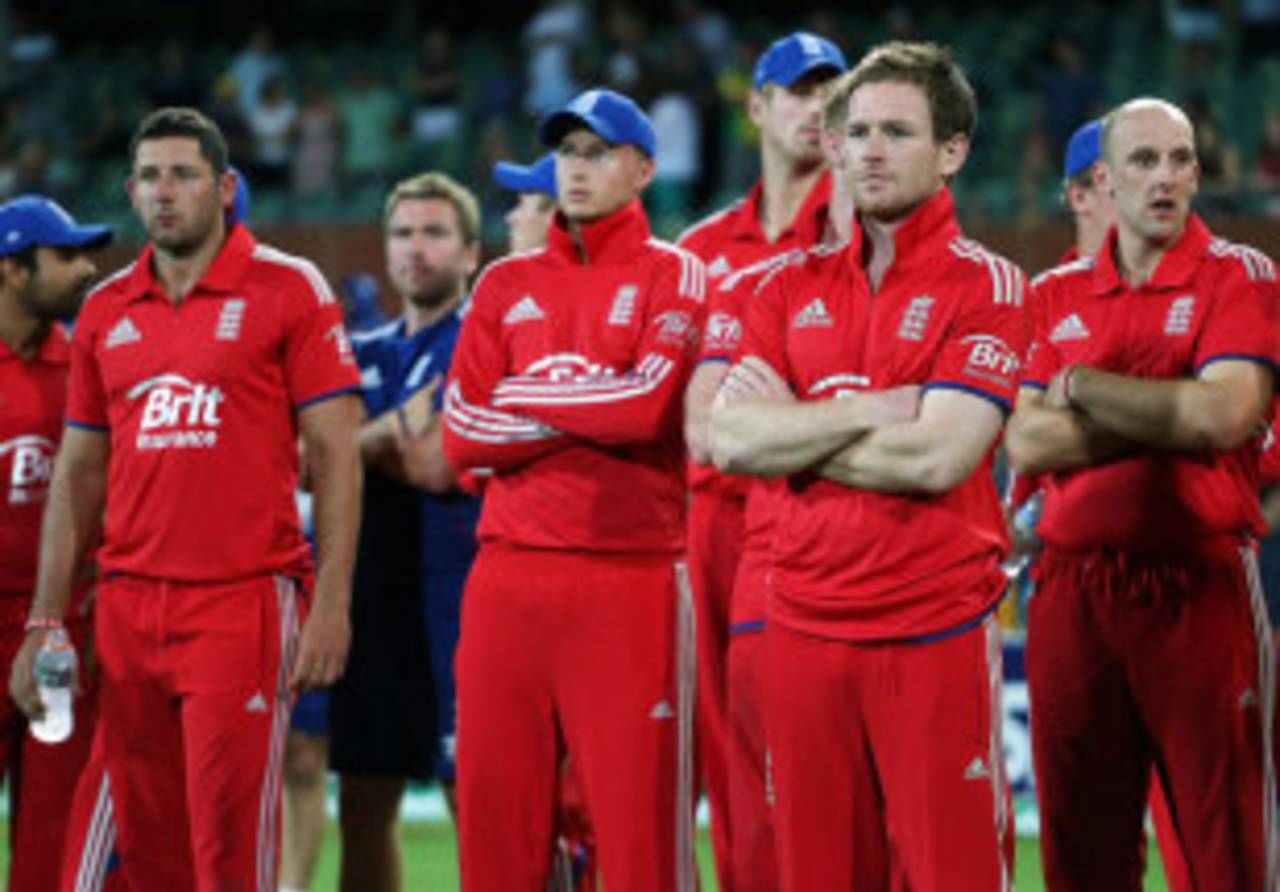Like the generous guests they have been over what seems to have been the worst part of an eternity, England's own manners got the better of them. On Australia Day, at the South Australia house that's yet to be rebuilt, they reacted to scuttling out their hosts on the cheap with an all too familiar
apology of a defeat.
No sooner had Australia lifted the Carlton Mid Trophy, England made their excuses and left. Some of them will head home,
including Alastair Cook, who must have lost a foot or so in height over the last three months. Others will head on to Hobart, where the Twenty20 slap and tickle begins. Today was all slap.
The Adelaide Oval has still managed to maintain its beauty, despite parts of its inside and surround areas resembling a neglected building site. The meeting of old and new world is uneasy, like teaching your grandma how to use the internet, only to receive a friend request on Facebook from her a week later. The intentions are admirable but at what cost?
The use of drop-in pitches here is a major part of the ground's redevelopment and many feel they rob the place of its charm. The MCG has shown that drop-ins are a must for a stadium organisation looking to flourish by hosting a greater variety of events but the Adelaide regulars who have spent the last month passing the same set of diggers shifting the same rubble are not so sure.
A footbridge offering a third path across the River Torrens is yet to be fully opened, despite the fact it was supposed to be ready before the Ashes Test at the beginning of December. The Eastern Stand, undergoing a facelift to increase the ground's capacity by 10,000, was vacant but for a couple of security guards and an array of orange cones on the middle deck. While the atmosphere was lopsided, the absence of anyone with uncontrollable flapping arms on one whole side of the ground meant that Mexican waves were given the little enthusiasm or encouragement they deserve.
At the halfway stage, the pitch was the main point of contention. Historically, those cultivated within the boundary offered something for all concerned, particularly across five days of a Test match. But since reverting to drop-ins, curators Les Burdett and Damian Hough have struggled to impart their old touch on the outer earth.
Western Australia head coach, Justin Langer, felt the preparation of Adelaide's pitches needed to be readdressed after his side were involved in a Sheffield Shield encounter where 1,237 runs were scored across the four days. The ODI track was far from November's "batting paradise" but turned out to be a sluggish surface that, while absent of demons, had enough in it to prey on indecision. At halfway, it was dreary.
Watching Bopara, usually an excellent player of spin, play Doherty out for a maiden in the batting Powerplay as Australia's ring fielders sniffed blood was excruciating
All bar one of Australia's wickets fell through batsmen trying to force shots; James Faulkner and Nathan Coulter- Nile could be excused, while the one anomaly, Aaron Finch (bowled by a ball that ducked back in), gave two catching chances that were both put down.
A target of 218 always looked short but, after seeing how even patience wasn't rewarded - evidenced by George Bailey's vain attempt at turning nearly two hours of crease time into more than his 56 (the top score of the match) - you felt a hectic chase in the offing. Ten of the England XI were also present at Edgbaston last year in the Champions Trophy Final against India. The similarities between the two capitulations are far too great to brush off as coincidence.
Both times, set batsmen put on a partnership -
Eoin Morgan and
Ravi Bopara then; Morgan and Joe Root now - that had seemingly broken the back of the chase, before both falling to miscalculations. The lower order then dithered and allowed a required run rate to climb to ultimately insurmountable heights. Both ended in five-run defeats and the ignominy of having to stand there as the coloured confetti of their rivals showered them like spittle.
It's hard not to think that, were Australia chasing, they would have tried to get the lion's share of the work done with their top order. Of course, much of that is down to the composition of their side but it is a side that knows how to pace a chase. When to stick, when to twist; how to spread the fielders, how to exploit that gap.
Watching Bopara, usually an excellent player of spin, play Xavier Doherty out for a maiden, in the penultimate over of the batting Powerplay as Australia's ring fielders sniffed blood, was excruciating. It reeked of a "as long as we have balls in hand" approach that is now far too conservative for modern ODI cricket. If you were given a dollar for every English dab behind point you would have enough to pay the $560 fine for taking to the field to plead with the batsmen to try something else.
It was a fascinating conclusion and one to add to the "low chase - big finish" scrapbook, one that would not have happened without the dreary first half. If we have learned anything objective in this ODI series it is that, while Perth may not be as quick, Sydney might not turn as much and Adelaide is still working itself out, Australia still has its variety - an important factor a year out from the World Cup. It could be a cracker.
